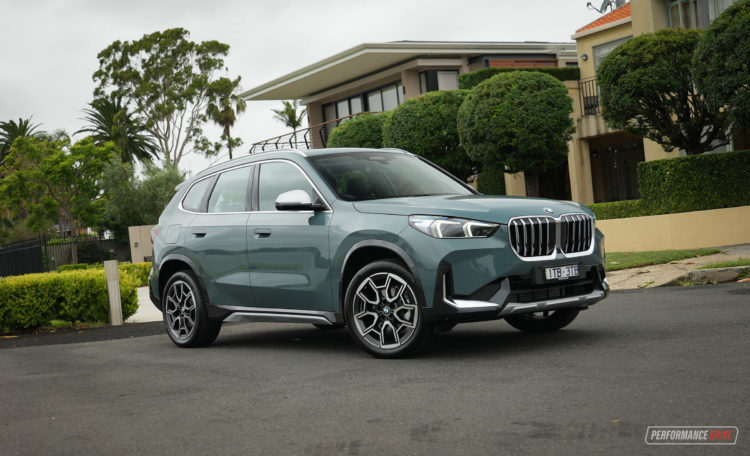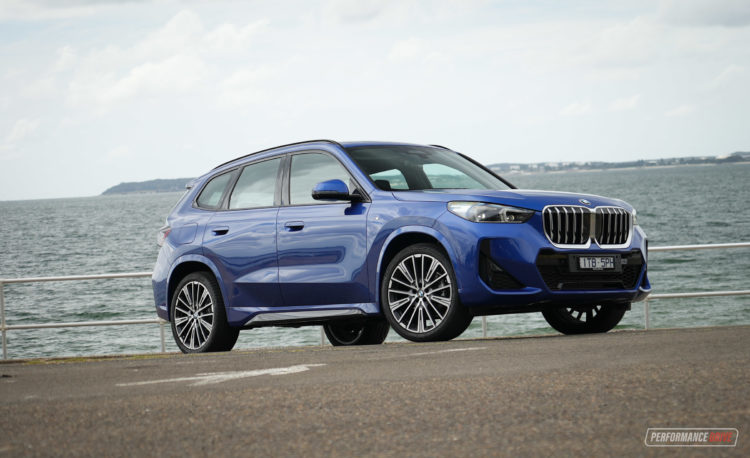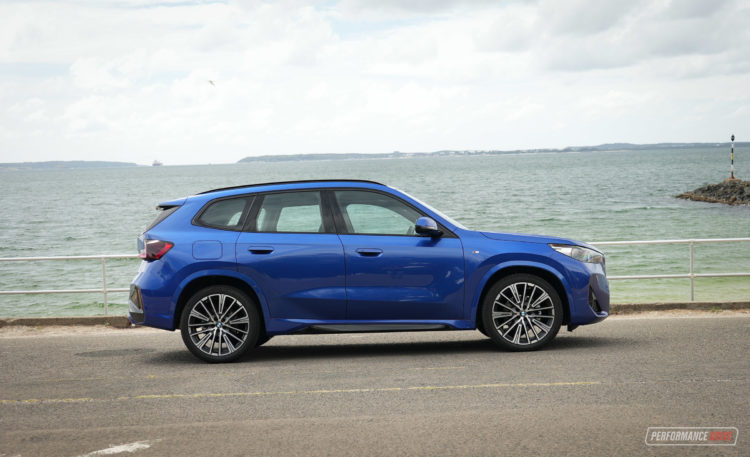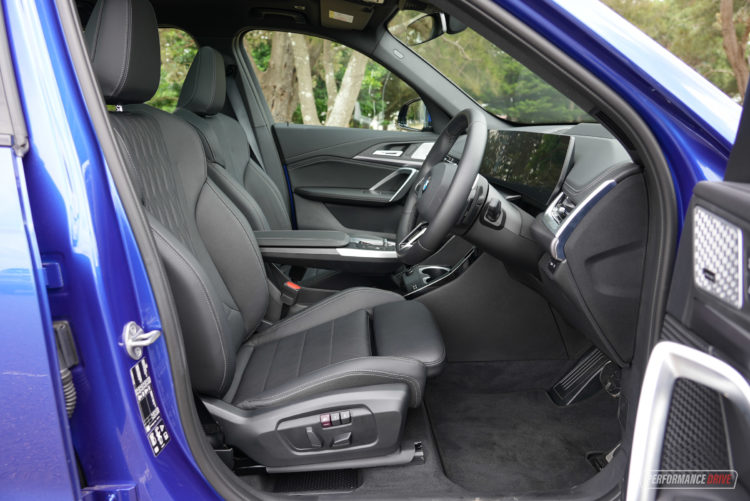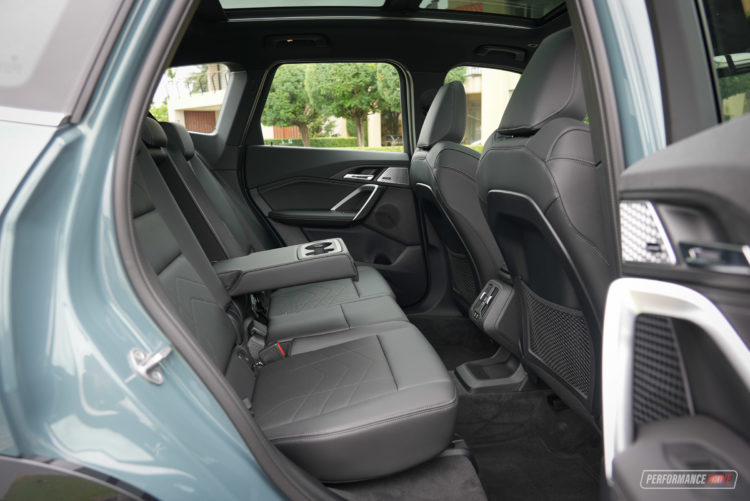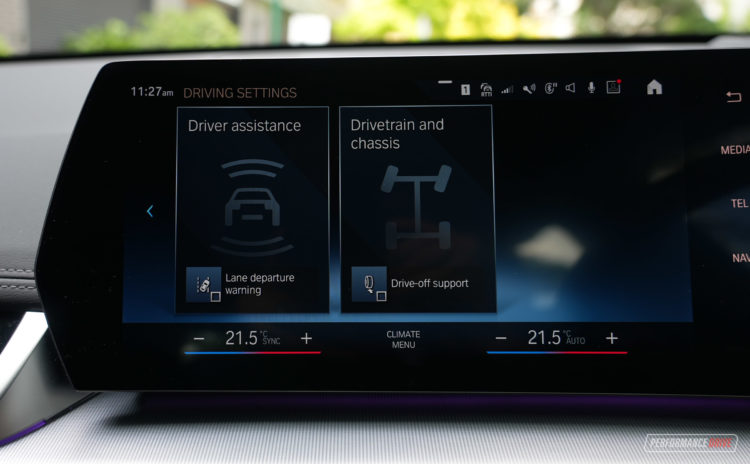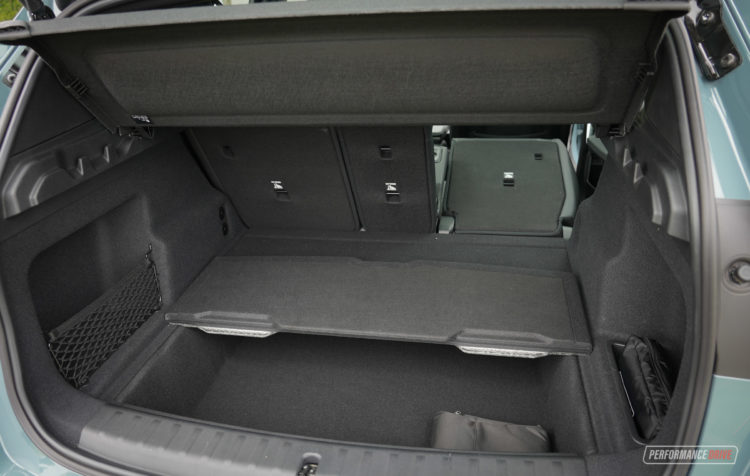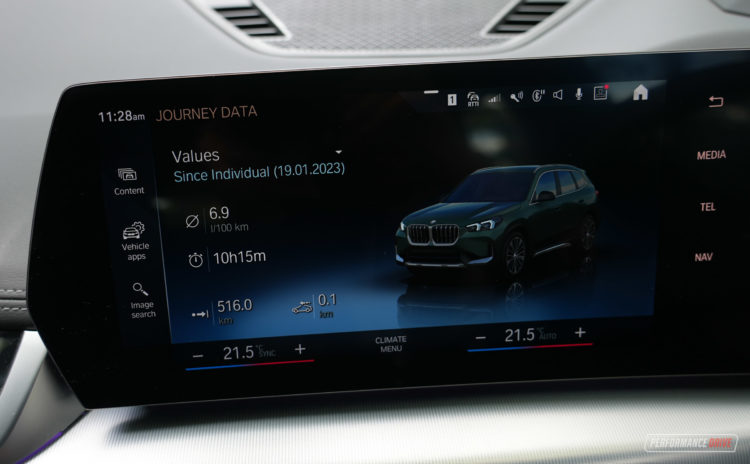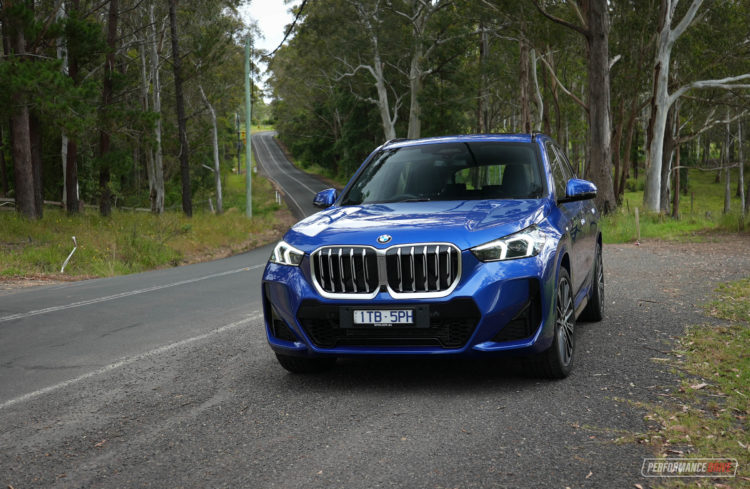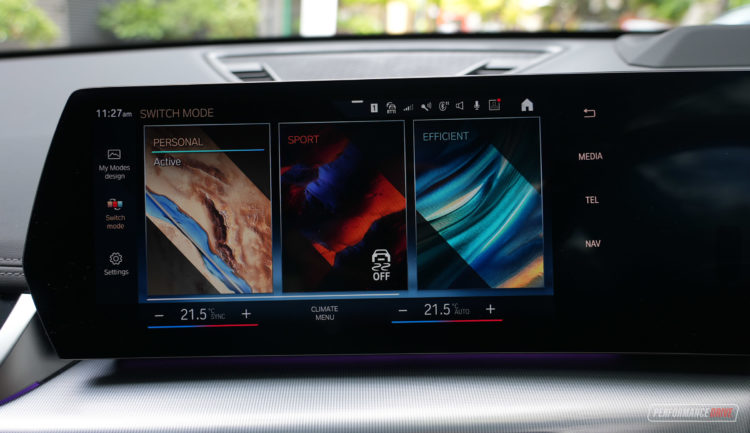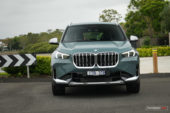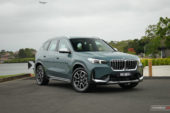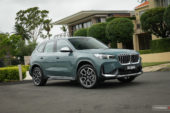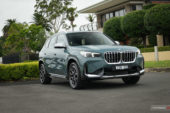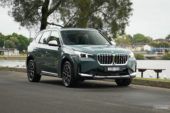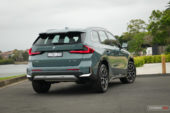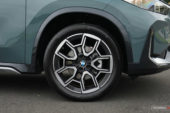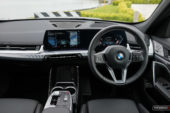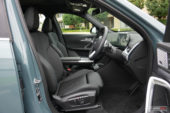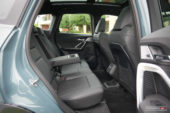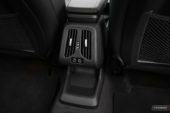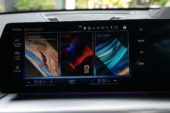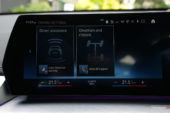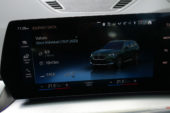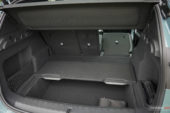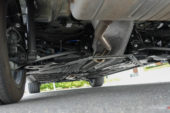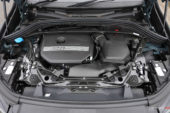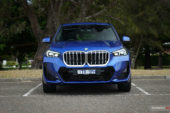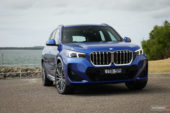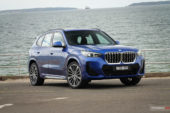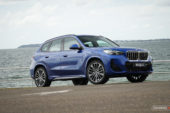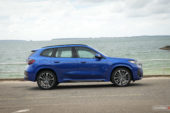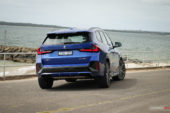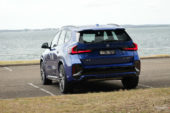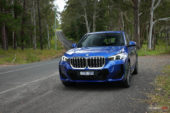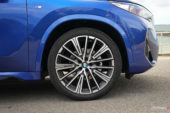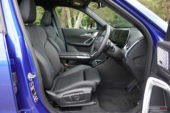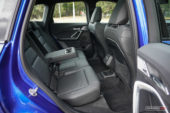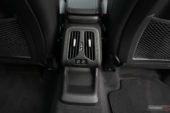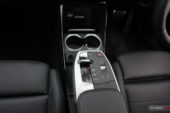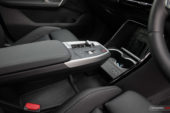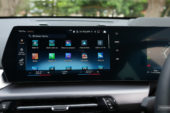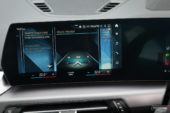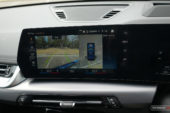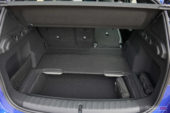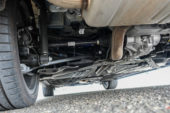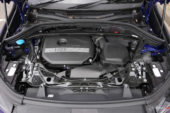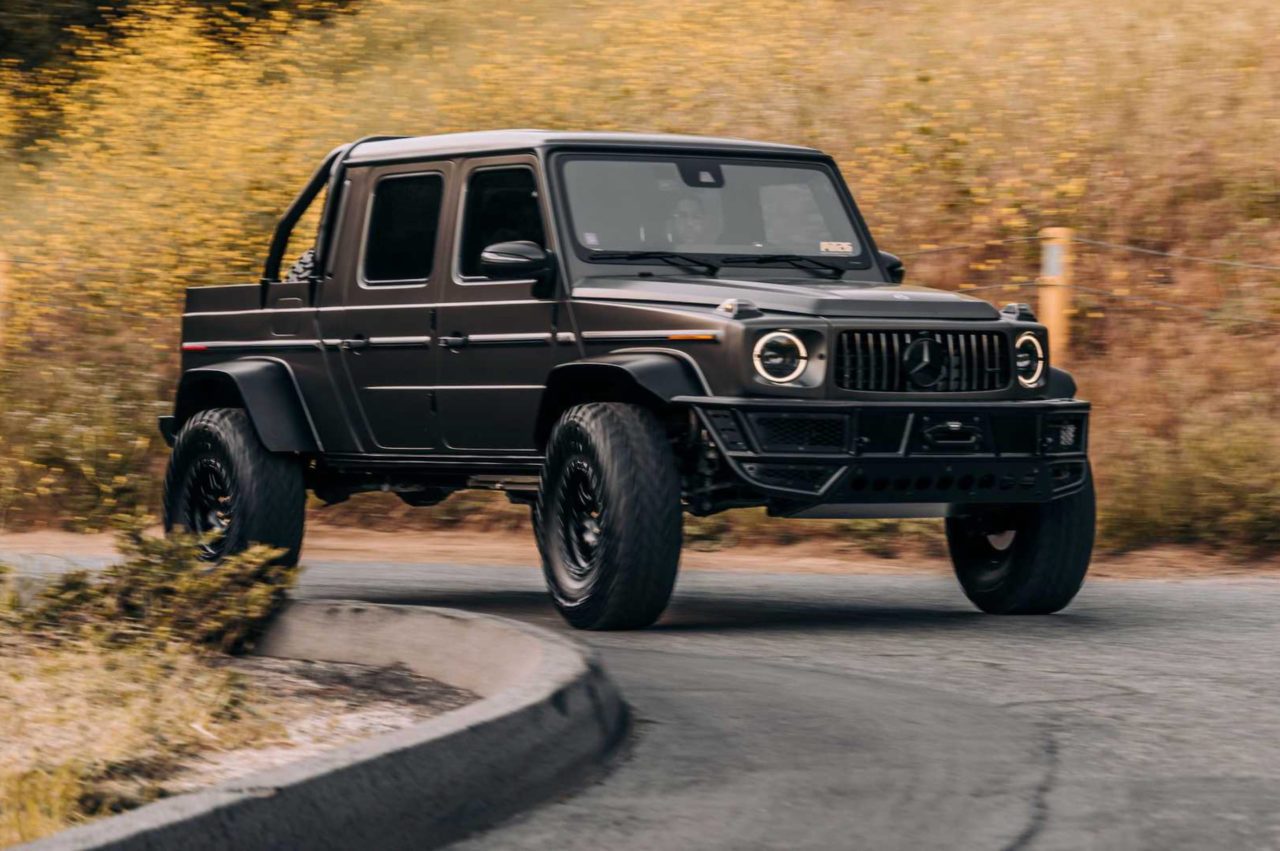BMW has released the third generation of its baby SUV – the X1. But just because it’s the smallest does not mean it’s small. Now bigger, bolder and smarter than ever before, the 2023 X1 is out to reset benchmarks for its class.
According to VFACTS, the outgoing X1 slipped to fourth position, or about 14 per cent share of the small SUV market above $40k at the end of 2022. Let’s see if this new model has what it takes to surge that market share.
Australia gets two engines to choose from in two variants. The base sDrive18i comes with a unique 1.5-litre, three-cylinder turbo-petrol engine that drives the front wheels only. It retails for $53,900. Then the gutsier xDrive20i gets a 2.0-litre, four-cylinder turbo0-petrol engine that powers all four wheels. Its starting price jumps $15k to $68,900 (both excluding on-road costs). Though, it automatically comes with the M Sport trim as a standard option and the sDrive18i does not. Both engines use a seven-speed double-clutch auto transmission.
We have all the good and bad here for you to digest after spending a week in both models.
2023 BMW X1 sDrive18i – THE SPECS
[column width=”47%” padding=”6%”]Engine: 1.5-litre turbo-petrol three-cylinder
Output: 115kW@6500rpm / 230Nm@1500-4600rpm
Transmission: Seven-speed dual-clutch auto
Drive type: Front-wheel drive
Wheels: F & R: 18×7.5, 225/55
ANCAP: Not tested
Tare weight: 1473kg
Power-to-weight: 12.80:1 (kg:kW)
Official fuel economy: 6.5L/100km
Economy during test: 6.9L/100km[/column] [column width=”47%” padding=”0″]Fuel capacity/Type: 45L/95 RON
Power efficiency: 17.69kW:L/100km
0-60km/h: 4.00 seconds*
0-100km/h: 8.55 seconds*
60-110km/h: 6.27 seconds*
1/4 mile: 16.40 seconds at 140.7km/h*
Max acceleration: 0.614g*
100-0km/h braking: 2.91 seconds at 37.18 metres*
Max deceleration: -1.176g*
Decibel at idle: 38*
Peak decibel at 60-100km/h: 75*
Priced from: $53,900[/column][end_columns]
2023 BMW X1 xDrive20i M Sport – THE SPECS
[column width=”47%” padding=”6%”]Engine: 2.0-litre turbo-petrol four-cylinder
Output: 150kW@650rpm / 300Nm@1450-4500rpm
Transmission: Seven-speed dual-clutch auto
Drive type: All-wheel drive
Wheels: F & R: 19×8.0, 245/45
ANCAP: Not tested
Tare weight: 1568kg
Power-to-weight: 10.45:1 (kg:kW)
Official fuel economy: 7.2L/100km
Economy during test: 7.7L/100km[/column] [column width=”47%” padding=”0″]Fuel capacity/Type: 45L/95 RON
Power efficiency: 20.83kW:L/100km
0-60km/h: 3.34 seconds*
0-100km/h: 7.11 seconds*
60-110km/h: 5.02 seconds*
1/4 mile: 15.24 seconds at 150.0km/h*
Max acceleration: 0.696g*
100-0km/h braking: 2.95 seconds at 38.58 metres*
Max deceleration: -1.239g*
Decibel at idle: 40*
Peak decibel at 60-100km/h: 79*
Priced from: $68,900[/column][end_columns]
* Figures as tested by PerformanceDrive on the day. Factory claims may be different
2023 BMW X1 sDrive18i & xDrive20i – THE PACKAGE
With so many SUVs under BMW’s belt, it must be a tough gig designing them all to be unique, while retaining a core design language. The German marque’s design language is a little blurred nowadays, but the X1 still stands out from the crowd with its elegant, three-dimensional cues. The front resembles the core BMW look the most, with a silver dual-kidney grille and deep dual lens headlights with a three-dimensional theme that you can see from side on. And when looking from the side, the X1 looks more like an SUV than a raised hatch with its overall upright stance.
From the rear angle, you really get that three-dimensional vibe with long L-shaped LED taillights and hexagonal ends that protrude out from the body. They also look swanky with their smoky, transparent design. A large roof spoiler tops it off with a sporty and aerodynamic edge.
Brushed silver roof rails, side mirrors, window surrounds and lower body areas all around contrast beautifully with the Cape York Green body paint on this sDrive18i. And black wheel arch surrounds give a rugged feel. The xDrive20i adopts some sportier cues thanks to the M Sport trim. Up front, large fenders form a muscular indent and body-coloured wheel arches and black window surrounds give off a bolder statement. In both models, in the name of aerodynamics, the door handles are made flush against the door, and shallow. Which also means they are not as ergonomic as conventional grab-handles. Only the tips of your fingers fit into the pull section of the handle.
Looking at actual dimensions, the X1 is now bigger in every direction. It is 53mm longer, 24mm wider, 44mm taller, and both wheelbase and ground clearance have grown by 22mm. You can certainly notice the changes when you hop inside. BMW has also done away with a hemmed in style of ergonomics as the X1 feels more open and minimalistic than ever before. The front row has all the room you need, with lots of leg stretch, headroom, and shoulder space.
The rear is surprisingly spacious, too, for this market segment of SUV. Three slim adults will comfortably sit back there as there is loads of knee space, under front seat space for your feet, and head clearance. Putting the rear seats on adjustable rails also provides a handy way to increase room where you need it. Disappointingly, the rail adjustment only comes with the ‘Enhancement’ package option, which is available on both variants for $4615 on the 18i and $3077 on the 20i (it brings in other features as well).
Further back, boot space is remarkably large for this market, winning the race with 476 litres. It’s 16 litres bigger than the Volvo XC40, 71 litres bigger than the Audi Q2, 52 litres bigger than the Lexus UX, 41 litres bigger than the Mercedes-Benz GLA, and only 74 litres smaller than the bigger sibling, the BMW X3. The space increases to 1527 litres when the 40:20:40 split rear seats are folded down. Though, unlike other SUVs, you cannot fold them down from the boot unless you can reach right across to the top of the seat.
Talking interior styling, BMW has finally caught up, and gone further in some areas. It’s full of high-quality materials and digital panels. You can choose from three elegant ‘Vernasca’ leather schemes – mocha, oyster or black – and three trimmings – gloss black, real polished aluminium, or open-pored eucalyptus wood. Soft touch surfaces and brushed metal surrounds and knobs look and feel first-class.
Adopting a minimalist layout makes the space feel open and practical. For example, you get a floating centre armrest with storage underneath it, and many physical buttons are now integrated into touch-screen menus. Although, physical buttons are quicker to find when driving, which results in less time with your eyes off the road in our opinion. A vertical wireless charging pad with a cradle that holds your phone in place is nifty, and great for saving space. Bottle and cup holders are generous in size, too.
Front and centre is a high resolution 10.7-inch curved display that runs BMW Operating System 8. In front of the steering wheel is another 10.25-inch instrument cluster display with BMW Live Cockpit Plus. The screens integrate wireless Android Auto and wireless Apple CarPlay, two-zone climate control, digital radio, satellite navigation, and a six-speaker sound system as a minimum. Our test models had the Enhancement package fitted, which upgrades the sound system to a brilliant Harman/Kardon 12-speaker setup with crisp and deep bass. Sadly, the iDrive controller wheel used to select objects on the centre screen has been removed in the X1. It is set to remain in larger models, thankfully.
Some key features in the sDrive18i include blind-spot sensors, lane-departure warning, forward and reverse collision mitigation with pedestrian detection, front and rear cross-traffic alert, front, rear and side parking sensors and cameras, automated parking assistance, distance-controlled cruise control, 18-inch alloys, selectable driving modes, leather seating, a powered tailgate, rain-sensing wipers, customisable ambient lighting, auto-dipping high beam, a head-up info display, and road sign recognition.
For an extra $15k the xDrive20i M Sport gains active lane keeping aid, heated and electronically adjustable front seats with memory, gear shift paddles, M Sport design cues, 19-inch alloys (optional BMW Individual 20-inch items as tested), sportier M Sport suspension, and a more powerful 2.0-litre engine that powers two more wheels.
BMW matches the market average with a five-year, unlimited kilometre warranty, and three years of complimentary road-side assistance. The brand also offers a prepaid service package to cover five years or 80,000km of maintenance (whichever comes first) for $2150 on the X1.
2023 BMW X1 sDrive18i & xDrive20i – THE DRIVE
First up, the 1.5-litre turbo three-cylinder engine in the sDrive18i is an eager performer. It manages to wring out 115kW and 230Nm. You can admire those outputs when you consider how small its displacement is, but 115kW is not exactly thrilling. Though, it pulls strength from the combination of an above average torque figure that kicks in from a low 1500rpm, and its 1473kg lightweight build. This also means pulling up hills and keeping up with the flow on busy roads feels like a rather unforced affair. When you need to complete a rapid takeover, you need to sink your foot down hard and allow for more time. 0-100km/h is officially clocked at 9.0 seconds and our real-world tests revealed a time of 8.55 seconds.
Power aside, when the little engine is giving its all, we love its angry and gutsy sound thanks to the unique three-cylinder harmony. A small engine would logically mean lower fuel consumption. Not to the extent we were expecting here. The official average is 6.5L/100km. Our testing over 500km (excluding our 0-100km/h tests) averaged 6.9L/100km. It’s not a terrible figure, but you’d want a better figure given the engine’s capabilities. We figure a smaller engine needs to be more highly strung, and we think you tend to push it more because it is small. It also requires a minimum of 95 RON petrol.
If power is important to you, opt for the xDrive20i. The 2.0-litre turbo kicks out 150kW and 300Nm. Without a doubt, you can feel the extra oomph. It’s marvellously light on its feet when push comes to shove. A perfect match for the size of the X1 and its target market. Plenty of go to pull you out of trouble, and less time where you feel like you’re giving the engine its all. The 0-100km/h sprint is officially listed at 7.4 seconds. Our testing with a Vbox revealed a real-world time of 7.11 seconds.
Interestingly, the bigger 2.0-litre engine burns only 0.7L/100km more than the 1.5-litre engine, with an official rating of 7.2L/100km. Unlike the three-cylinder, it also needs to power all four wheels. Our average over 500km of travel revealed 7.7L/100km, which is about on par with this market and engine credentials. But it also requires the more expensive 95 RON fuel.
One aspect of both engines we could not overcome was an annoying take off delay from stop. It’s a common curse in dry dual-clutch autos, but some manufacturers have improved it by changing to wet dual-clutch technology. Even heavy-footed take-offs exhibit the irritating delay. Once moving though, the seven-speed hastily runs through the gears, and smoothly.
Even though the X1 stands taller as an SUV, its dynamics on the road are impeccable. That German engineering is where the X1’s elite heritage shines through, and the premium price is suddenly justified. Both variants hang onto corners like a low-to-the-ground sedan or hatch equivalent. Cornering feels solid and stable, and body roll comes through much less than we were expecting. All its workings in action feel tight and composed. And somehow, it does not mean you have firm suspension and an uncomfortable ride. Quite the opposite.
With plenty of suspension travel to absorb any nasty bumps or holes, the ride is luxuriously calm and comfortable. Even when travelling over speed humps rapidly, the X1 does all the work to keep the cabin relaxed. Active electronic dampers on the xDrive20i M Sport mildly firm up the suspension for that sporty feel, and comfort levels are uncompromised. It also feels assuring to gain that four-wheel drive grip advantage with the xDrive system.
Steering has a notably light feel to it. Which makes it easy to manoeuvre and park. On the move, it can come across as a touch too sensitive for the X1’s higher centre of gravity. Light steering on a taller vehicle like the X1 can makes corners feel sudden. But the confidence in the chassis supports such movements in any case.
2023 BMW X1 sDrive18i & xDrive20i – THE VIDEOS
2023 BMW X1 sDrive18i & xDrive20i – THE VERDICT
The BMW X1 catapults to the head of its class with this new third-generation. It’s a roomy “small” SUV with smart use of space everywhere. You get modern and high-quality finishes with huge screens that are full of the latest tech and excellent functionality. The external design also turns heads with its modern contours and striking LED lights.
In terms of engine performance, the bigger engine makes you feel more in charge. It carries the X1 more fluently. The smaller three-cylinder engine is still very capable, and fun, but we think its fuel consumption is too similar to the four-pot to make it worthwhile living with the lower power outputs.
The real standout for us is how smoothly and composed the X1 absorbs bumps at the same time as maintaining a strong, secure and stable ride around corners. It offers an agile and calm ride, positioning it as the new class benchmark in our view.
Pricing for the entry model X1 sDrive18i is quite reasonable, and being a much bigger vehicle than ever before, even the xDrive20i’s higher price is acceptable; the new X1 reaches a wider portion of the overall market and is thus more appealing to a wider audience.
[column width=”47%” padding=”6%”]PROS:
– For the smallest SUV in the family, it is practical and huge inside
– Both engines offer punchy performance for non-performance models
– Impeccable suspension balance
– Huge leaps forward in interior refinement and technology
– sDrive18i is excellent value for a premium vehicle[/column] [column width=”47%” padding=”0″]CONS:
– Annoying initial take-off delay from the dual-clutch auto
– Steering can be a little too touchy at times, but the chassis backs it up
– iDrive controller has sadly been removed from the X1[/column][end_columns]
As always, if you’re thinking about buying a new car don’t forget to click here to speak with our car buying specialists.
